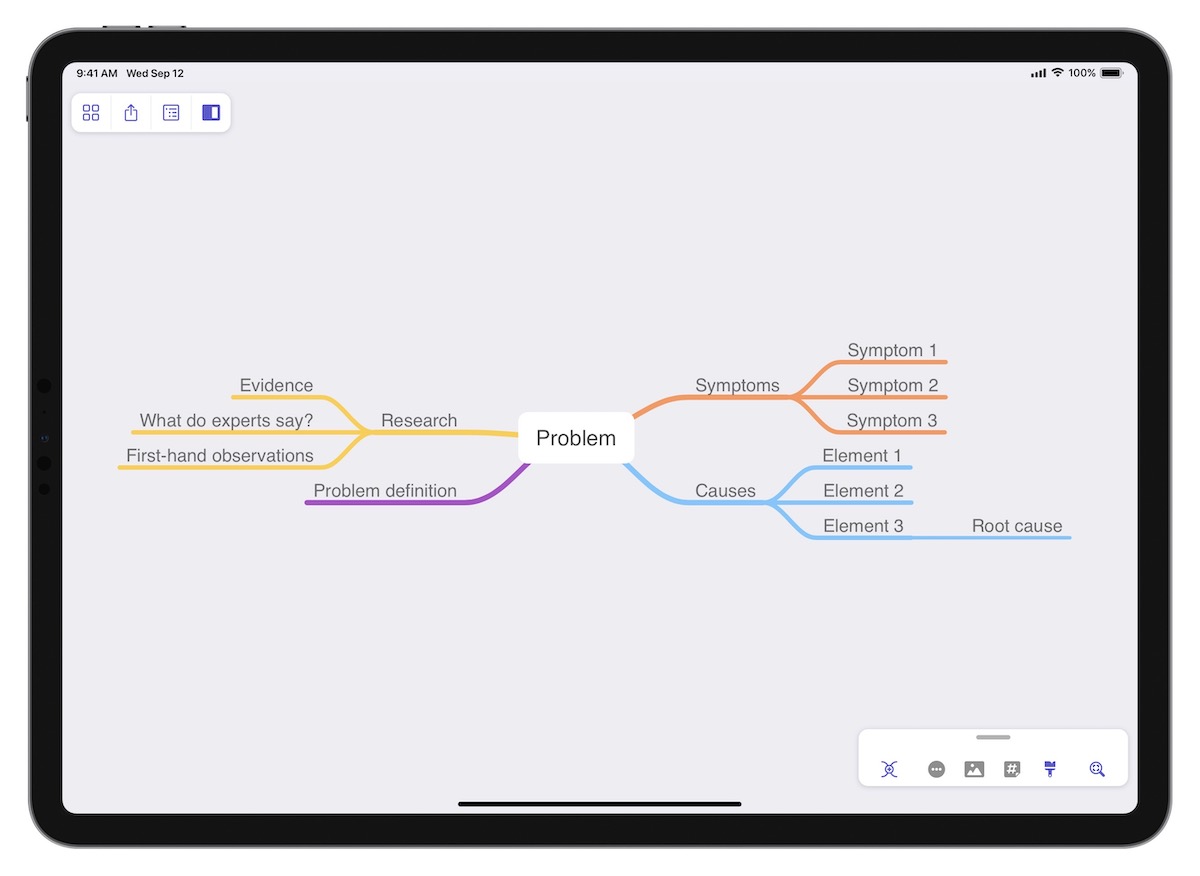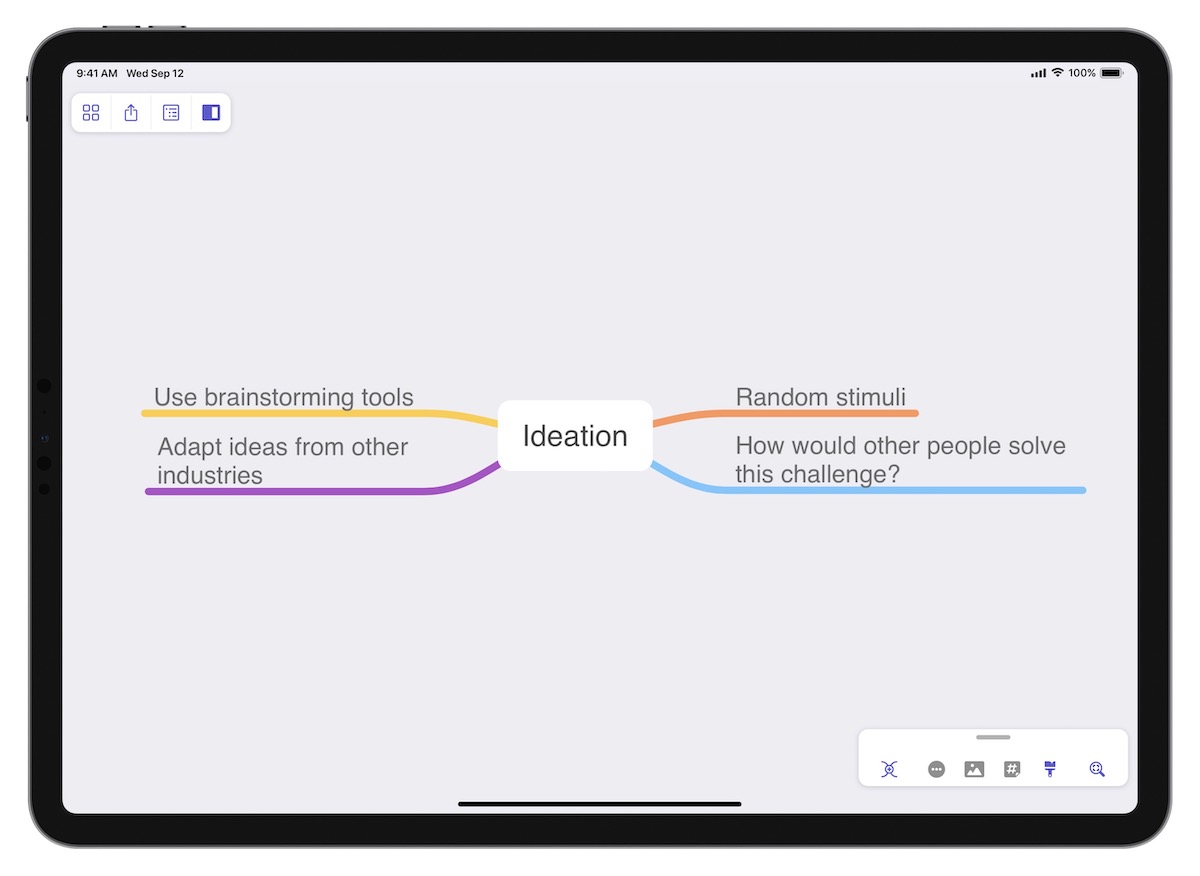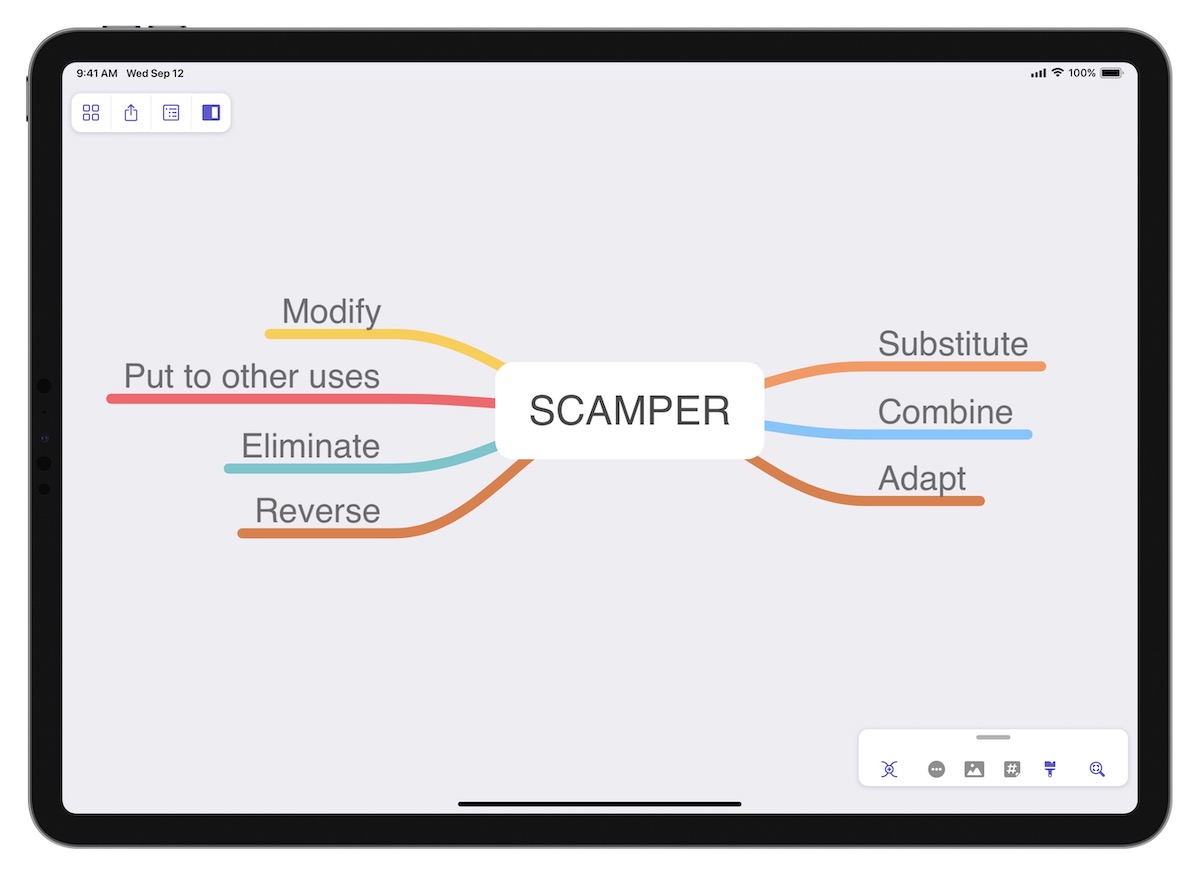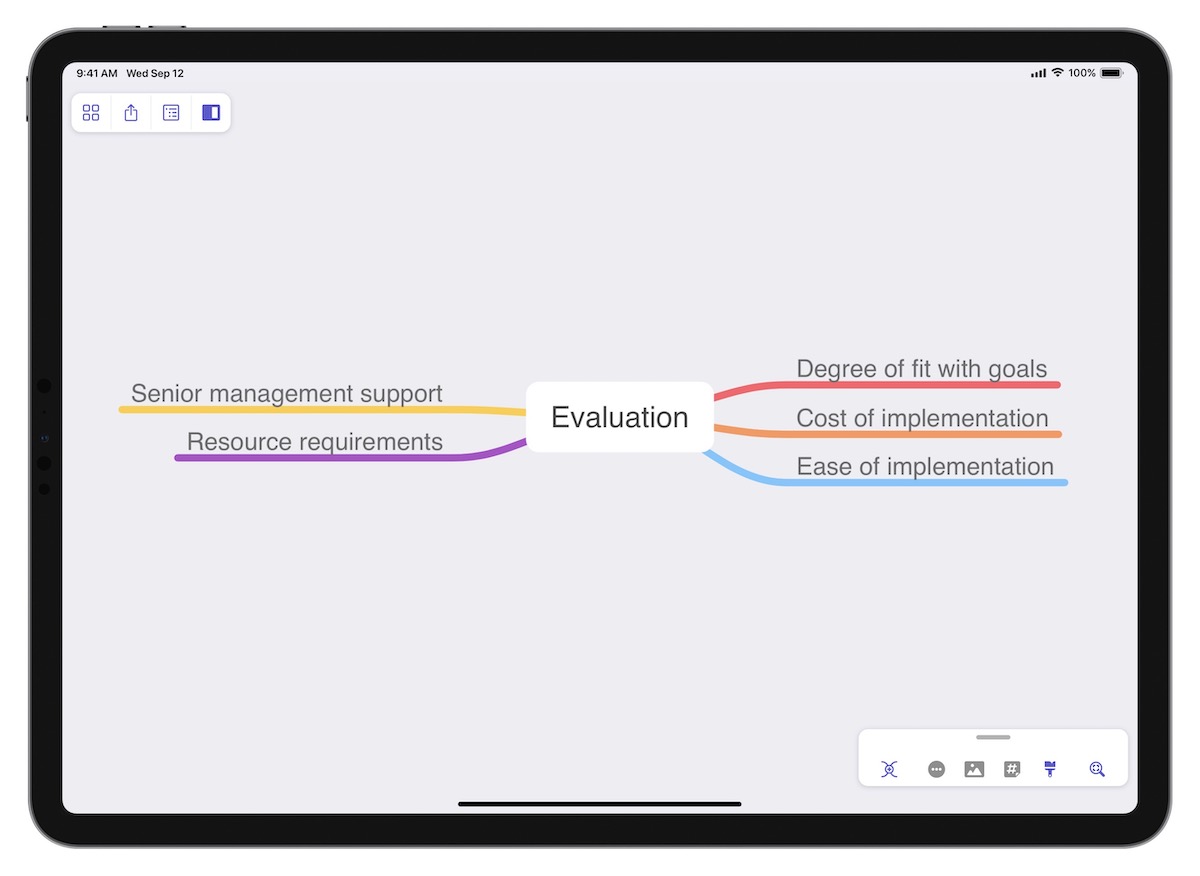Chuck Frey’s Simple 5-Step Process to Find Your Big Ideas On Demand
This Mindfulness Monday article is a guest post by Chuck Frey, creator of mindmappingsoftwareblog.com and author of several books on creativity including MaxThink, a creative ideation system that can help you be more creative and get unstuck. In this article, Chuck shares the key pieces of his own ideation system.
Everyone loves to brainstorm ideas. It’s sexy. It’s fun.
But more often than not, it’s a waste of time.
It usually doesn’t yield a smashing creative breakthrough. If you’re not careful, you may end up with just a pile of half-baked, unfocused ideas that may (or may not) have some value.
Like many things in business, creativity responds well to a process — one that guides you along the path of birthing, nurturing and implementing game-changing ideas. This simple system includes 5 steps:

This process has become the go-to framework for creativity for entrepreneurs, authors, change-makers and creatives of every stripe because it works. They don’t have to depend on the vagaries of some obscure creative muse. Instead, they are able to summon their best creative thinking — on demand!
Let’s take a closer look at each step and how you can use it to uncover it and capitalize on your next Big Idea.
Step 1: Problem definition
Albert Einstein was once asked, “If you knew the world was going to end in one hour, how would you use the time to solve that problem?” He answered that he would spend 55 minutes thoroughly exploring, researching and defining the problem and five minutes brainstorming solutions.
He realized that it was essential to accurately define the problem that needed to be solved. All the exotic thought experiments in the world wouldn’t make any difference if it turned out he was solving the wrong problem.
We can learn a lot from Einstein’s approach, but we need to adjust our thinking about creative problem-solving accordingly.
The first step of the creative process is investigation — doing a deep dive into the nature of the problem:
- Gather all the information you can find on the subject. Immerse yourself in it. Do Google searches. Talk to subject matter experts. Find out everything you can.
- Break the problem into its component parts. Are any of them solvable?
- Investigate if any other industries or professions have solved similar problems. If so, how could you adapt them to your needs?
Action steps
- Gather all the information you can find on the subject. Immerse yourself in it.
- Use a mind mapping tool like MindNode to state the problem as the central topic.
- Capture visible symptoms but keep asking “Which is caused by…” until you identify its root cause.
- Break it into its component parts to see if any of them are solvable.
- Investigate if any other industries or professions have solved similar problems. If so, how could you adapt them to your needs?

Step 2: Ideation
Now it’s time for the fun part that everyone loves — brainstorming!
But it’s more focused now because of the problem definition exercise we did in step one. Keep these brainstorming best practices in mind:
- Your goal is to develop LOTS of divergent ideas. Go for quantity.
- Don’t censor yourself or try to evaluate ideas as you generate them.
- Record every idea, no matter how ridiculous or outlandish you think it is. Your craziest ideas may actually be stepping stones to elegant, practical solutions.
- Use prompts, triggers or ideation exercises to jump-start your thinking in fresh directions.
- Try to keep going for at least 30 minutes. Remember, you must keep pushing past the easy, top-of-mind, low-value ideas to find the good stuff!
Don’t stop when you generate what looks like the first “right idea.” You know what I’m talking about. The one that makes you exclaim, “Woah! That’s cool!” It’s a common tendency during brainstorming sessions.
But that’s a problem, because the first ideas you generate will tend to be the lowest value ones.
Here’s an analogy that explains what I’m talking about: In the world of mining, you must first dig through overburden — dirt and rock that has little or no value — to uncover the rich, incredibly valuable seam of minerals that lies beneath it.
And so it is with ideas. By pushing farther into the periphery of your thinking, you’re digging in the mental equivalent of a vein of pure gold. This is where your most valuable ideas hide!
Action steps
- Do a brain dump of ideas.
- Push beyond the obvious, easy answers.
- Use random stimuli to spur divergent ideas (such as a random word, something in your environment or something you read or heard on a TV program. Freely associate words related to the stimulus you’ve selected, and then look for creative ways to connect them back to your creative challenge.
- Look at the ideas you’ve captured so far. What OTHER ideas do they suggest?

Step 3: Incubation
After you have brainstormed a wealth of ideas, you shouldn’t jump right into evaluation and implementation. Instead, mentally walk away from them for a few hours or a few days. During this time, even though your conscious mind is occupied with other priorities, your subconscious mind continues to mull over your creative challenge and your ideas.
That means that your brain is likely to continue to bubble up additional ideas. Make sure you have a way to record them and incorporate them into the list of ideas you’ve already brainstormed.
This is also an opportunity to look for ideas that may be improved or combined. Don’t overlook these opportunities, because you can use them to turn mediocre ideas into really strong ones.
One of the best ways to do that is a brainstorming and idea improvement technique called SCAMPER. Its name is a mnemonic for Substitute, Combine, Adapt, Modify/Magnify/Minify, Put to other uses, Eliminate and Reverse/Rearrange.
The reason it’s so popular is because it forces you to look at your challenge from a variety of creative perspectives. In so doing, SCAMPER whacks you out of your usual, rutted mode of thinking and often yields valuable, creative ideas.
In short, it’s popular because it delivers results!
Action steps:
- Don’t actively think any more about your idea for 24-48 hours.
- Record any ideas that percolate up into your mind during this time.
- When you return to your idea, focus on adding to/enhancing/organizing/distilling your ideas.
- Use the SCAMPER technique to consider your challenge and ideas from a variety of creative perspectives.

Step 4: Evaluation
Ideas only have value if you implement them. That’s why it’s important to have an organized system for evaluating your ideas. According to creativity experts, there a number of ways to do so. Here are three of the most common:
- Implementation cost
- Ease of implementation
- Resource requirements
I recommend that you select one or two evaluation frameworks. Don’t make this process too complicated.
The next step is to create a scale for scoring your ideas. I recommend a scale of 1-5 or 1-10, where higher scoring ideas have greater value. You can also rank ideas using an ABC method. It all depends how granular you want to get in your assessments.
Once you have evaluation criteria set up, you can use them to assign values to each of your ideas. If you decide to utilize multiple evaluation criteria, simply total the scores of each individual criterion to arrive at a total score.
Action steps:
- Select your criteria for evaluating your ideas.
- Create a numeric scale to evaluate your ideas. A scale of 1-10 works well.
- Total the score for each idea.

Step 5: Action
Now that you have identified a handful of ideas that you plan to implement, you now need to develop action plans for each of them, which specifies the who, what, when, why, where and how of them. A mind map is a perfect tool to help you flesh out your action plan.
Happy idea hunting!
For a more detailed look at the specifics of Chuck’s system, take a look at his book MaxThink. The book also includes access to a series of Evernote templates if you prefer to use that tool instead of mind mapping for your ideation process.
